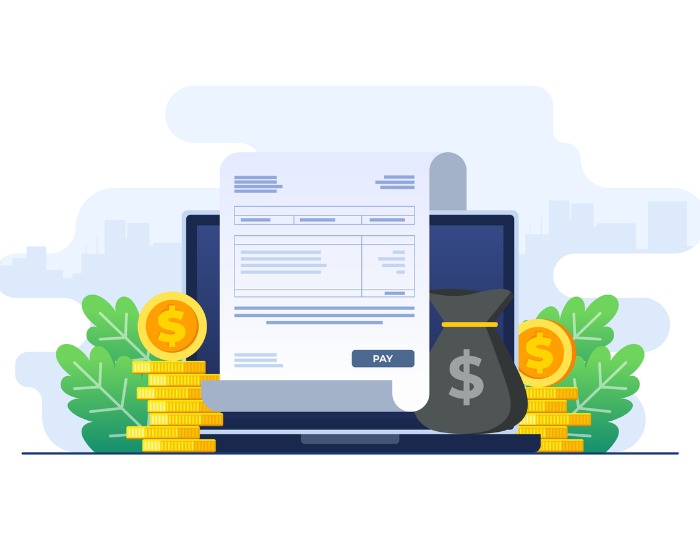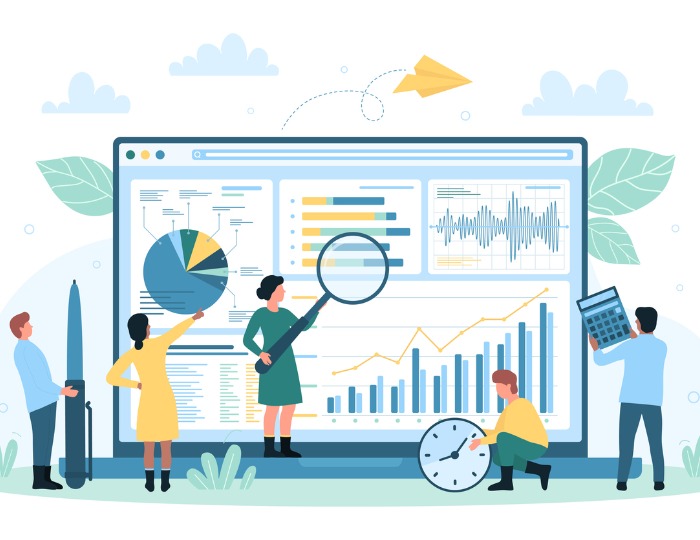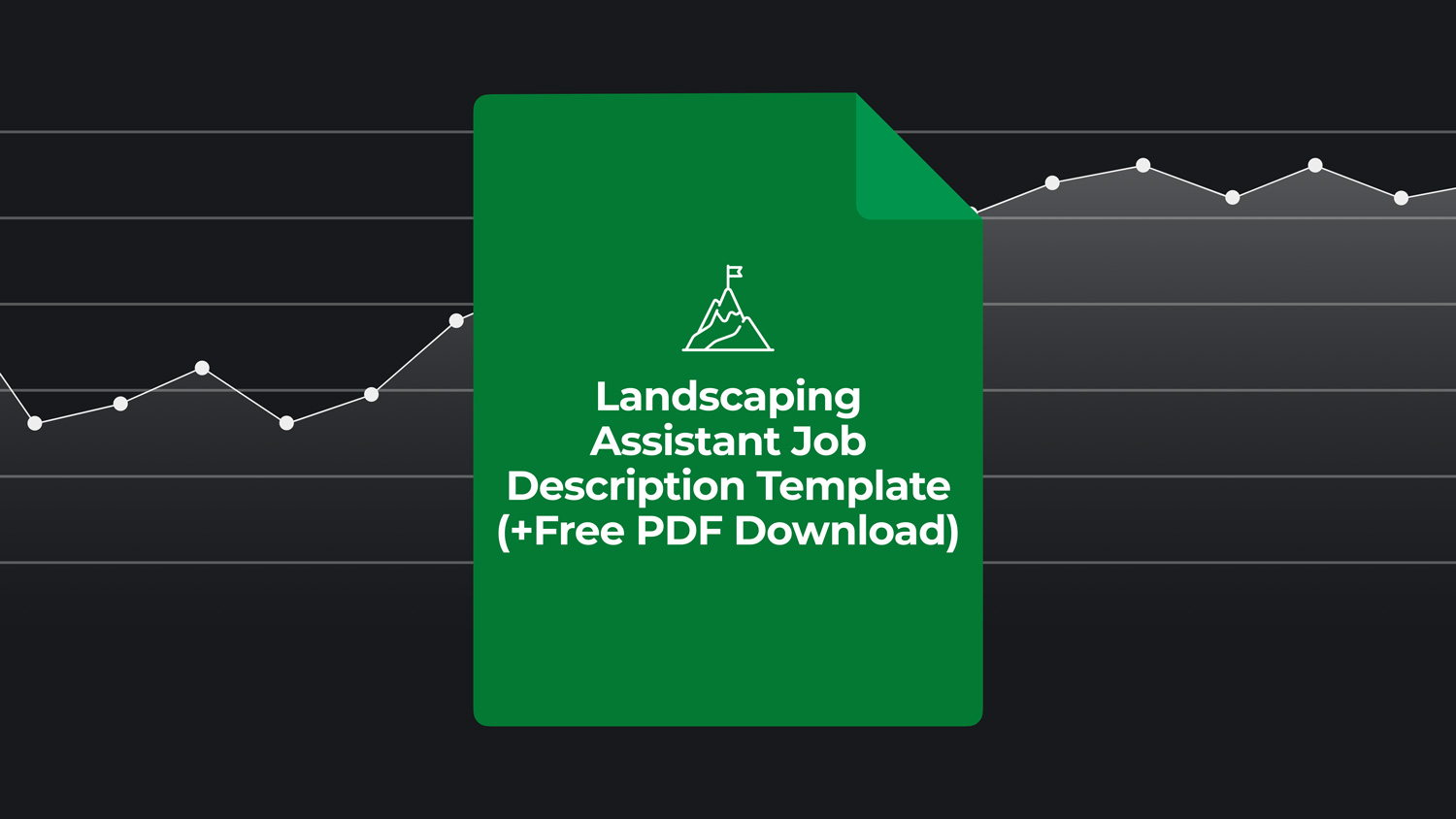Table of Contents
Table of Contents
- What is job costing, and why is it essential for janitorial businesses?
- How to optimize your janitorial job costing process
- Tips to optimize job costing for commercial cleaning businesses
- How Aspire’s job costing template can help your janitorial business
- How to create a janitorial job costing template
- Best practices for creating an effective job costing template in the janitorial industry
- Aspire is an all-in-one business management platform
- Change the way you job cost with Aspire
Understanding direct and indirect job costs gives commercial cleaning companies the insight they need to drive profitability and unlock new revenue from existing operations.
However, recording and analyzing the comprehensive data required for job costing takes time and can lead to redundancies and omissions. Even simple mistakes can have a significant impact on the profitability of a job.
A small error in costing materials or labor for an evergreen contract across multiple properties could cost a janitorial company thousands.
A template provides a standardized structure for commercial cleaning companies to collate and analyze job costing data to improve service pricing, inform resource allocation, and empower accurate revenue forecasting.
What is job costing, and why is it essential for janitorial businesses?
Job costing identifies, records, and analyzes a job’s direct and indirect costs. Accurate cost information is essential when calculating gross and net profit margins—the metrics by which commercial cleaning businesses evaluate profitability and plan growth initiatives.
Accurate and ongoing job costing is essential in the janitorial industry because of a few factors that differentiate it from other field services businesses, such as:
Consumables: Commercial cleaning companies often provide materials for properties, such as paper products, soap, and air fresheners. As supply costs change, job costing data must be adjusted.
Varied labor costs: The scope of work and type of cleaning for janitorial crews can vary widely from job to job, from simple cleaning and vacuuming to disinfecting and deep cleaning. Understanding the amount of staff required and the duration of work is critical.
Service frequency: Unlike many field service businesses, most commercial cleaning contracts are evergreen and as frequent as daily. A mistake in job costing can quickly add up to significant lost revenue.
Because job costing is labor-intensive and tedious, many business owners do it once when initially pricing their services and may not take the time to break down detailed costs.
While a common practice, this can hurt a business’s revenue, growth potential, and even its ability to stay in business.
How to optimize your janitorial job costing process
A standardized process eliminates the guesswork of calculating costs. Using a template ensures commercial cleaning businesses account for direct and indirect costs for every service.
1. Define and track key performance indicators (KPIs)
Every company has to decide the metrics by which they measure success. Tracking KPIs helps an organization identify the most and least profitable services to guide its service offerings and refine resource allocation. Typical KPIs include:
Estimated and actual job costs and the variance between them
Gross profit margin: the cost of services vs. revenue
Net profit margin: total costs vs. revenue
2. Ongoing process review
Unfortunately, job costing isn’t a one-and-done operation. Costs change across an organization as crews become more experienced, material and supply prices fluctuate, and indirect costs evolve. You ensure your data is always accurate by frequently looking at your job costs process.
3. Leverage technology to streamline the process
While a template is better than nothing, using janitorial business management software for job costing eliminates the manual, time-consuming aspects of the process and provides higher-quality, real-time data. Greater precision empowers unparalleled profitability.
An optimized job costing system ensures data tracking with the greatest benefit to your organization, such as informing critical decisions and identifying costly inefficiencies.
Tips to optimize job costing for commercial cleaning businesses
Whatever your growth stage or readiness to implement new business management software, you can begin to optimize the way you do job costing today using Aspire’s free downloadable template and these intuitive strategies.
Take time to understand the unique cost factors in your services. Record every cost associated with providing a service, from environmentally friendly cleaning products to the range of consumables you provide.
It’s tempting to pressure your crews to work quickly to minimize labor costs, but pricing services to allow for the unexpected allows your team to provide high-quality service at every job—helping build a robust customer base.
Keep accurate data for material, supply, and equipment costs. Regularly recalibrating costs can help you stay profitable despite supply chain issues and rising prices. It can also reveal when it’s time to find a new vendor if prices get too high.
Track overhead costs, from leasing an office building to managerial salaries, marketing, and insurance. Overhead costs are part of your services, so having accurate, detailed records of every expense is essential.
The best way to ensure every service is profitable is to set minimum profit margins when setting prices. Your profits affect your ability to reinvest in the company, overcome challenges, and grow your business. They’re as critical a cost as labor or materials.
How Aspire’s job costing template can help your janitorial business
Using a job costing template helps structure the process. It guides janitorial companies step-by-step through all the associated expenses with typical commercial cleaning services, providing space to calculate the variance between estimated and actual costs.
A job costing template is a straightforward way to see how details that may feel insignificant—like the soap you provide for a property—can add up to make a massive impact on your profit margins.
Templates improve efficiency and accuracy in job costing
Without a standardized approach to job costing, team members bring individual approaches to getting the task done, informed by their own experiences and priorities.
Templates ensure that everyone performs job costing the same way, so they:
Account for the same labor and material costs
Apply consistent indirect costs
Add the same profit margins to every job
Using a structured and standardized process is the first step to greater accuracy in your data and consistency in the service proposals you send to prospective customers.
A job costing template isn’t a complete solution for profitability and growth
Regardless of how comprehensive your template may be, there are limitations to using manual processes.
Calculating cost variance and profit margins by hand takes up your team’s valuable time and only shows you profitability after a job is completed—when it’s too late for proactive management to safeguard revenue.
An end-to-end business management platform, like Aspire, automatically records centralized cost data and provides real-time profit visualizers on every work ticket.
Technology empowers office staff to focus on responsive management decisions that impact revenue and growth, such as:
Customer experience
Resource allocation
Service offerings
A template provides some information about job costing, but software provides the data you need to improve how you do business and unlock new revenue opportunities.
How to create a janitorial job costing template
The more time you spend perfecting your template, the less effort it will take to perform job costing for each of your services and properties.
1. Determine your labor costs for each janitorial service
The hourly rate you pay your cleaning crew is just the start of the cost for your business. You also have to consider the following:
FICA and Medicare
State and federal unemployment tax
Workers Compensation
Liability insurance
The hourly cost of an employee may be several dollars more than their wage.
(Time to Complete Service) x (Wage + Expenses in dollars) = Labor Cost
This calculation is relatively straightforward, but you must consider the difference in wage rates between more experienced workers and new hires and how much longer a green crew may take to complete the job.
Finding the right balance between labor costs and the time needed to complete a service may take some additional math.
2. Estimate the material costs for each job
Recent years have shown how much rising material costs can affect a business’s ability to stay profitable. It’s tempting to set material and supply costs once and always work from the same data.
However, regularly updating changes in your material costs can help janitorial companies see when it’s time to change vendors or eliminate a costly service from their offerings entirely.
3. Equipment and maintenance costs
Many commercial cleaning companies overlook this component of job costing because it can be complicated to define the wear and tear on equipment for each job.
However, adding the cost of regular maintenance service, repairs, and new equipment purchases ensures that you’ll always have the right gear to get the job done, and repairs won’t hurt your monthly cash flow.
4. Factor in overhead costs
Most business owners take into consideration their office space, insurance, and salaries into their indirect costs, but there’s no shortage of expenses not directly related to providing service, such as:
Marketing and advertising
Subcontractor expenses
Licensing and expenses
The more diligent a business is in tracking and recording indirect costs, the more accurate it can be in pricing services.
5. Setting profit margins
All services need to include set profit margins beyond just covering your costs. Guaranteeing profits in your services provides you with the capital your need to:
Reinvest in your company
Seize upon growth opportunities
Overcome challenges
Companies that set profit margins are better positioned to define their success and achieve ambitious long-term goals.
Best practices for creating an effective job costing template in the janitorial industry
As much as templates can improve your workflow efficiency and accuracy, making a mistake in the template can compromise your job-costing data until you find and fix the error.
Avoid these common mistakes when job costing
Entrepreneurs and small business owners are accustomed to figuring things out on the fly, including finding mistakes by doing it the wrong way first. Keep these common mistakes in mind if you create your own job costing template:
Mistake 1: Not accounting for all costs
It’s overwhelming to sit down and identify all the daily, weekly, monthly, and annual costs for your business, from office supplies to gas for your fleet and unemployment insurance.
Also, consider the hourly time spent beyond just the cleaning, such as for walk-throughs and audits, to ensure service quality meets standards.
Perform a monthly audit of your costs to ensure you’re recording every expense a cleaning task accumulates so your janitorial proposals are comprehensive in their accuracy.
Mistake 2: Using inaccurate or outdated data
Monthly audits also ensure that you accurately attribute the expense when you job cost, especially for those items with fluctuating prices—like gas.
Knowing this information also helps business owners anticipate switching vendors, buying new equipment, or trading in an older vehicle.
Mistake 3: Failing to adjust for variance
Job costing only benefits your organization if you implement what you learn from the data.
When there’s a variance between estimated and actual costs, it’s critical to immediately make adjustments to resolve the discrepancy in your cleaning rates rather than relying on more profitable services to make the difference in revenue.
Even if you avoid these mistakes, you can only gather data about the actual costs of a job after it’s completed—when it’s too late to manage costs to maintain profitability. With software, you can access real-time data about material and supply costs, labor, and the integrity of your profit margins.
Aspire is an all-in-one business management platform
Manual processes and siloed software or apps will get the job done, but they don’t empower growth and give business owners comprehensive control over their operations.
Choosing the right business management software changes business owners' relationships with their enterprises. Get industry-proven support for unlocking profitability, driving new revenue, and growing your business.
End-to-end functionality
Centralized operations and cloud-based data storage simplify daily operations and allow you to run your business from anywhere you have an internet connection.
Aspire performs job costing while you work, bringing together discrete aspects of commercial cleaning to record expenses with unparalleled accuracy, including:
Materials and supplies pulled from inventory
From-the-field time tracking for crews allocated to individual work tickets
Profit margin visualizers for at-a-glance job progress
Drill-down work tickets generated from your cleaning estimates make it easy to access all information about a property and job, without searching across multiple software solutions, which sometimes might have conflicting information housed in each one.
Drive growth and improve margins with informed decisions
Real-time information isn’t just convenient; it’s essential in the cleaning industry to make responsive management decisions to safeguard profitability.
Knowing a job is about to go over estimated costs before it happens lets you be proactive in:
Reallocating resources
Identifying workflow issues
Issuing change orders
Using Aspire, you can prevent your crews from ever working at a loss and quickly identify your low-profit and high-cost services. Improved data makes it easy to adjust prices for more accurate cleaning proposals, improve forecasting, and generate predictable monthly cash flow.
Change the way you job cost with Aspire
When your business grows beyond using PDF templates and Excel spreadsheets for job costing, consider implementing an all-in-one software solution like Aspire. It brings all your operations into a unified, cloud-based platform that gives business owners operational control wherever they have WiFi.
Aspire users grow faster than the industry average because of the software’s ability to improve efficiency, unlock new profitability in existing cleaning services prices, and guide management to make growth-driven decisions.
Check out the Resource Center for a complete library of free templates, ebooks, and guides, including:
Find out why ServiceMaster Clean chose Aspire as their business software, and then schedule a demonstration to see how a janitorial management platform can transform your organization.











